| 24 April |
• yesterday • tomorrow |
| Optional Memorial for Saint Fidelis of Sigmaringen, Priest and Martyr |
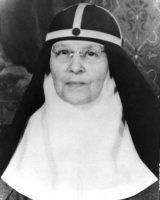
Maria Elizabetta Hesselblad
Fifth of thirteen children born to Augusto Roberto Hesselblad and Cajsa Pettesdotter Dag. Raised in the Reformed Church of Sweden. Due to economic hard times, the family moved regularly.
Maria emigrated to New York at age 18 to seek work to support her family back in Sweden. She studied nursing at Manhattan's Roosevelt Hospital where she worked as a nurse from 1888, and did home care for the sick and aged. Her work took her into the large Catholic population of New York; her interest in the Church grew, and she came to see it as the place closest to Christ. She converted to Catholicism, receiving conditional baptism on 15 August 1902 by the Jesuit priest Giovani Hagen at Washington.
Pilgrim to Rome, Italy in late 1902, receiving Confirmation there. She returned briefly to New York, but then sailed back to Rome to start a religious life. Settled at the Carmelite House of Saint Bridget of Sweden on 25 March 1904. In 1906 she got permission from Pope Pius X to take the habit of the Brigittines (Order of the Most Holy Saviour of Saint Bridget).
She worked to restore the Order in Sweden and Italy, especially in Rome. She returned to her homeland in 1923, ministered to the poor, and tried to revitalize the Brigittine movement there. Received control of Rome's Brigittine house and church in 1931. Established Brigittine foundations in India in 1937. Saved Jews and others persecuted by the Nazis by giving them refuge in Rome; in 2004 she was recognized by Yad Vashem as one of the Righteous Among the Nations for this work.
4 June 1870 at Faglavik, Alvsborg province, Sweden
24 April 1957 in Rome, Italy of natural causes
5 June 2016 by Pope Francis
In an instant the love of God was poured over me. I understood that I could respond to that love only through sacrifice and a love prepared to suffer for His glory and for the Church. Without hesitation I offered Him my life, and my will to follow Him on the Way of the Cross. - Blessed Maria, reflecting on her baptism into Catholicism
Dear Lord, I do not ask to see the path. In darkness, in anguish and in fear, I will hang on tightly to your hand, and I will close my eyes, so that you know how much trust I place in you, Spouse of my soul. - Blessed Maria
The Lord has called us from different nations, but we must be united with one heart and one soul. In the divine Heart of Jesus we will always meet one another and there we seek our strength to face the difficulties of life. May we be strengthened to practice the beautiful virtues of charity, humility and patience. Then our religious life will be the antechamber to Heaven. - Blessed Maria
Our religious houses must be formed after the example of Nazareth: prayer, work, sacrifice. The human heart can aspire to nothing greater. - Blessed Maria
We must nourish a great love for God and our neighbors; a strong love, an ardent love, a love that burns away imperfections, a love that gently bears an act of impatience, or a bitter word, a love that lets an inadvertence or act of neglect pass without comment, a love that lends itself readily to an act of charity. - Blessed Maria
https://catholicsaints.info/saint-mary-elizabeth-hesselblad/
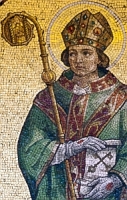
• Wilfrid of Ripon
• Vilfrido, Wilfrith
Son of a Northumbrian thegn. His mother died when Wilfrid was a boy, and he never got along with his step-mother. At age 14, partly to escape the miserable family life, he was sent to the court of Oswy, King of Northumbria (part of modern England). He studied at the monastery of Lindisfarne, England for three years, then accompanied Saint Benedict Biscop to Rome, Italy where he studied under archdeacon Boniface. He stayed in Lyon, France for three years to study the monastic life, and became a monk, but left during persecutions of the local Christians. He was appointed abbot of the monastery at Ripon, England for five years, and placed it under the Benedictine Rule. Priest.
He was instrumental in bringing Roman liturgical practice and rules to the region, working influentially at the Synod of Whitby in 664. Bishop Colman and several of his monks, opposing the new practice, withdrew to the north. Wilfrid was chosen as the new bishop and travelled to France for ordination, considering the dissenting northern bishops to be schismatics. He returned to England in 666, nearly dying at the hands of hostile pagans when his ship wrecked on the coast of Sussex. However, he had taken so long to come back that Saint Chad had been chosen to replace him. Wilfrid retired to the monastery at Ripon and evagelized in Mercia and Kent. In 669 Archbishop Theodore of Canterbury explained to Saint Chad that Wilfrid should have the see; Chad withdrew, and Wilfrid resumed the bishopric.
During his tenure Wilfrid worked to enfoce Roman ritual, founded Benedictine monasteries, and rebuilt the minster of York, all while living a simple and holy life himself. He became embroiled in political discord when he encouraged Queen Etheldrida to move to a convent when she no longer wished to live with her husband, King Ecgfrid. When Archbishop Theodore subdivided Wilfrid's diocese to reduce his influence, Wilfrid appealed to Rome. Pope Agatho ruled in Wilfrid's favour, and the three intruding bishops were removed. However, when Wilfrid returned to England King Ecgfrid accused him of buying the decision, imprisoned him at Bambrough, then exiled him to Sussex.
Wilfrid worked as a missionary in heathen Sussex. He reconciled with Archbishop Theodore, who had also been working in Sussex, in 686, and when Aldfrid became king of Northumbria, Theodore insured Wilfrid's return from exile. He served as bishop of Hexham, and then of York again. However, when he tried to consolidate the dioceses again, the king and Theodore opposed him, and Wilfrid was forced to appeal again to Rome in 704. Through a series of meetings, synods and rulings, Wilfrid became bishop of Hexham and Ripon, but not York. In the end Wilfrid accepted, deciding that the result of this turmoil was that everyone involved had agreed to the authority and primacy of the Pope and the Vatican, the principle he had fought for all along.
634 in Northumbria, England
709 at Oundle, Northhamptonshire, England
• Middlesbrough, England, diocese of
• Ripon, England
https://catholicsaints.info/saint-wilfrid-of-york/
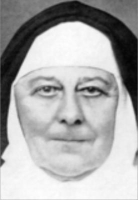
• Euphrasia Pelletier
• Marie of Saint Euphrasia
• Mary Sainte-Euphrasie Pelletier
• Rose Virginie Pelletier
• Rose-Virginie Pelletier
Born during the French Revolution. Studied at Tours, France. Joined the Refuge of Our Lady of Charity at Tours on 20 October 1814, an order devoted to rescuing "fallen" women and those in danger of going on the game. She took the name Marie-Euphrasie, and made her religious profession on 9 September 1817. Superioress on 26 May 1825.
Founder of The Congregation of Our Lady of Charity of the Good Shepherd (Good Shepherd Sisters) at Tours on 11 November 1825, and established their monastery at Angers, France on 31 July 1829; this congregation has the same mission, but is a contemplative order. She was recognized as Superior-General of the Congregation on 9 January 1831, and received approval from Pope Gregory XVI on 16 January 1835.
The Congregation has sisters working in Italy, Germany, Belgium, England, Algeria, the United States, Canada, Egypt, Ireland, Austria, India, Chile, Malta, the Netherlands, Australia, and Myanmar. By the end of her life, there were over 2,000 sisters established in 100+ houses on five continents; this rapid expansion led to her being known as a patron of travellers.
31 July 1796 at Noirmoutier, Vendée, France as Rose Virginie Pelletier
24 April 1868 at Angers, Maine-et-Loire, France of natural causes
2 May 1940 by Venerable Pope Pius XII
travellers
Draw near to our Lord, thoroughly aware of you own nothingness, and you may hope all things from His Goodness and Mercy. Never forget that Jesus Christ is no less generous in the Blessed Sacrament than He was during His mortal life on earth. - Saint Mary Euphrasia Pelletier
It is human to fall, but angelic to rise again. - Saint Mary Euphrasia Pelletier
The Blessed Sacrament is the first and supreme object of our worship. We must preserve in the depths of our hearts a constant and uninterrupted, profound adoration of this precious pledge of Divine Love. - Saint Mary Euphrasia Pelletier
One person is of more value than the whole world. - Saint Mary Euphrasia Pelletier
If you always love one another, if you always uphold one another, you will be capable of working wonders! - Saint Mary Euphrasia Pelletier
The old stars burn out and die, look to new horizons and even beyond. - Saint Mary Euphrasia Pelletier
https://catholicsaints.info/saint-mary-euphrasia-pelletier/
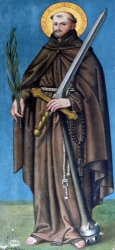
• the poor man's lawyer
• Mark Rey
Lawyer and philosophy teacher. Disgusted by the greed, corruption, and lack of interest in justice by his fellow lawyers, Mark Rey abandoned the law, became a priest, became a Franciscan friar with his brother George, changed his name to Fidelis, and gave away his worldly wealth to poor people in general and poor seminarians in particular. He was served his friary as guardian, and worked in epidemics, especially healing soldiers. He led a group of Capuchins to preach to Calvinists and Zwinglians in Switzerland. The success of this work, and lack of violence suffered by mission was attributed to Fidelis spending his nights in prayer. He was, however, eventually martyred for his preaching.
1577 at Sigmaringen, Hohenzollern, Germany as Mark Rey
murdered 24 April 1622 at Grusch, Grisons, Switzerland
24 March 1729 by Pope Benedict XIII
29 June 1746 by Pope Benedict XIV
• heretics
• the Morning Star
• trampling on the word heresy
• with a club set with spikes
• with a whirlbat
• with a hurlbat
• with an angel carrying a palm of martyrdom
• with Saint Joseph of Leonissa
Woe to me if I should prove myself but a half-hearted soldier in the service of my thorn-crowned Captain. - Saint Fidelis
https://catholicsaints.info/saint-fidelis-of-sigmaringen/
William Firmatus of Tours
Canon and physician at Saint-Venance. Because of a divine warning against avarice, William gave all his possessions to the poor and spent the rest of his life on pilgrimages and as a hermit at Savigny and Mantilly. Known for his closeness to nature, his love of wildlife, and the unusual communication he seemed to have with animals. Legend says that at Dardenay during a drought, he saved the people by striking the ground with his pilgrim's staff, causing a spring of water to appear.
1103 of natural causes
against headache
• man thrusting his arm into a fire
• man with a raven that showing him the way to the Promised Land
It is said of him that even the wildest birds would approach him without fear, and come and eat out of his hand, and take refuge under his clothes from the cold. When he sat by a pond near his cell, the fish would swim to his feet and readily allow themselves to be taken up by the servant of God, who put them back into the water without hurting them.
One day his clerk came running to him, and told him that a wild boar was ravaging the garden, and destroying nearly all the vegetables. William went to the fierce animal, and took it gently by the ear. The wild boar, as tame as a lamb, let itself be led by the saint into his cell; there it passed the night, and was only liberated early the next morning, after a kindly warning not again to destroy gardens belonging to its clergyman. It should be added that Saint William made the wild boar fast all night in his cell. - from "The Little Bollandists" by Monsignor Paul Guérin, 1882
https://catholicsaints.info/saint-william-firmatus/
• Egbert of Iona
• Egbert of Lindisfarne
• Egbert of Northumbria
• Egbert of Ripon
• Ecgberht...
Born to the Northumbrian nobility. Benedictine monk at the monastery of Lindisfarne, England. Unsuccessfully worked to stop King Egfrith from invading Ireland in 684. Studied at Rathmelsigi monastery, (modern Mellifont, County Louth) Ireland, and then served as a teacher to newer brothers. Once, near death from plague, he prayed for a longer life to have time to do penance; he vowed to live in exile, and never returned to England. Priest. Travelling bishop. Sent Saint Wigbert, Saint Willibrord of Echternach and other missionaries to evangelize the pagans of Friesland. He wanted to go to the foreign missions himself, but was instructed in 688 by a vision of Saint Boisil to work for reform of monastic life. In 716 he finally accepted the assignment, and travelled to Iona to the houses following the Rule of Saint Columba. There he spent 13 years gently, prayerfully convincing the monks to accept Roman ways, especially in the method of computing Easter. Died immediately following the celebration of Easter Mass.
c.639 in Northumbria, England
24 April 729 at the island of Iona, Scotland of natural causes
https://catholicsaints.info/saint-egbert-of-rathemigisi/
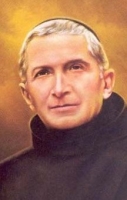
• Angelo Ercole Menni Figini
• Angelo Menni Figini
• Benedict Mennu
• Benito Menni
• Brother Benedetto
• Brother Benedict
Son of Luigi Menni and Luisa Figini, the fifth of fifteen children in the family. Brother in the Order of Saint John of God Hospitaler. Studied philosophy and theology at the Seminary of Lodi, Italy and then in the Gregorian Pontifical University of Rome, Italy. Ordained in 1866. By order of Pope Pius IX, in 1867 he began the restoration of the Saint John of God Order in Spain and Portugal. Founder of the Congregation of Hospitaller Sisters of the Sacred Heart of Jesus on 31 May 1881. A real Samaritan, he made the care of the elderly, abandoned children, polio victims and the mentally ill the guide of his life.
11 March 1841 at Milan, Italy as Angelo Ercole Menni Figini
• 24 April 1914 at Dinan, France of natural causes
• relics at the Mother House of the Congregation of Hospitaller Sisters of the Sacred Heart of Jesus in Ciempozuelos, Spain
21 November 1999 by Pope John Paul II
https://catholicsaints.info/saint-benedetto-menni/
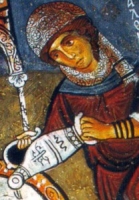
• Salome the Myrophore
• Irene (Greek equivalent to Salome)
Wife of Zebedee. Mother of Saint John the Apostle, and Saint James the Greater. May have been a cousin of the Blessed Virgin Mary. One of the "three Marys," the holy women who ministered to Jesus during his earthly ministry, and may have accompanied him on his travels. Witnessed Christ's death on the cross, his entombment, and his resurrection. Mark mentions Salome as one of the women who came to anoint the body of Jesus on the morning of the Resurrection.
One gospel story that shows Jesus and Salome has her asking Jesus what places her sons will have in His Kingdom. Jesus responds that it is the Father who assigns places in the Kingdom and that James and John will have to follow His own example of humility and sacrifice to earn places there.
Legend says that after the Resurrection she went to Veroli, Italy and spent the rest of her life there spreading the Good News.
Veroli, Italy
https://catholicsaints.info/saint-mary-salome/

• Ivo of Ramsey
• Ive, Ives, Ivia, Yves, Yvo
Bishop. Hermit at Huntingdonshire, England. The city of Saint Ives (formerly Slepe), Huntingdonshire (modern Cambridgeshire), England is named for him. His gravesite was lost for years, but in 1001 four bodies were uncovered in an unmarked grave; one bore a bishop's insignia. A local layman had a vision that this was the body of Ivo, and all four were translated to the Ramsey Abbey. A spring soon appeared near the site of their interment, its waters known for healing miracles. A later vision convinced the brothers at Ramsey to keep the relics with the bishop's seal, and return the bodies of the three companions to Slepe.
Huntingdonshire, England of natural causes
Saint Ives, Cambridgeshire, England
https://catholicsaints.info/saint-ivo/
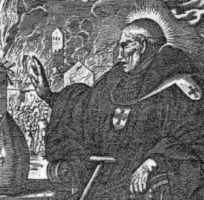
Mellitus of London
Abbot of Saint Andrew's Abbey on the Coelian Hill in Rome, Italy. Sent by Pope Saint Gregory the Great as a missionary to England in 601. Worked for three years in Kent. Bishop of London, England in 604. Exiled to France for refusing to give Communion to apostates. Recalled to serve as Archbishop of Canterbury, England in 619.
24 April 624 of natural causes
against gout (he suffered from it, and pilgrims to Canterbury who had it were directed to his tomb)
https://catholicsaints.info/saint-mellitus-of-canterbury/
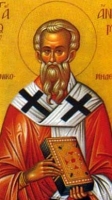
Anthime, Anthimus, Antimo, Antimus, Antym
• 27 April (Martyrologium Hieronymianum; Roman Martyrology prior to 2001) • 28 December as one of the 20,000 Martyrs of Nicomedia
Bishop of Nicomedia. Martyred in the persecutions of Diocletian for refusing to sacrfice to idols.
• beheaded in 303 in Nicomedia, Bithynia (modern Izmit, Turkey)
• basilica erected over his tomb by Justinian
https://catholicsaints.info/saint-anthimos-of-nicomedia/

Devotion to the Blessed Virgin Mary in the form of a statue of Mary and the Christ Child that was washed up at a Mercedarian monastery near Cagliari, Italy on 25 April 1370, apparently from a shipwreck the night before. Legend says that the locals tried to open the crate it was in, but only one of the Mercedarian monks could get the it open.
Sardinia, Italy
https://catholicsaints.info/our-lady-of-bonaria/
Beuve, Boba, Bona
Born a Merovingian princess, the daughter of King Sigebert of Austrasia; sister of Saint Balderic, aunt of Saint Doda of Rheims. Called to the religious life, she rejected a series of marriage proposal to become the first abbess of the Saint Peter monastery in Rheims, France.
• 673 of natural causes
• relics at the Saint-Pierre Monastery, Rheims, France
https://catholicsaints.info/saint-bova-of-rheims/
Dermot
Bishop of Armagh, Ireland in 834. Renowned for his learning. Driven from his see by the usurper Foraunan in 835, Diarmaid ruled for a year from Connacht, and then returned in 836. In 841 the see was destroyed by Vikings.
Irish
c.852 of natural causes
https://catholicsaints.info/saint-diarmaid-of-armagh/

Mary of Clopas
Mother of Saint James the Lesser. Sister of Our Lady. Present at the Crucifixion, and went to Christ's tomb on Easter morning. All else that we know about her is legend.
https://catholicsaints.info/saint-mary-of-cleophas/
Dié, Deodato
22 August (Azeglio, Italy)
Hermit near Blois, France. The town of Saint-Dié, France grew up around his cell. Bishop.
c.525 of natural causes
Azeglio, Italy
https://catholicsaints.info/saint-deodatus-of-blois/
Sabas Stratelates
Military officer of Gothic descent. Tortured and murdered with 70 unnamed companions in the persecutions of Aurelian for the crime of visiting Christians in prison. Martyr.
drowned in 272 in Rome, Italy
https://catholicsaints.info/saint-sabas-the-goth-of-rome/

Erminio
Martyr.
• Rome, Italy, date unknown
• relics enshrined in a gilded wooden urn in the church of Saint Benedict in Perugia, Italy on 23 April 1662
https://catholicsaints.info/saint-hermirzius/
Oye of La-Ferté
Father of Saint Ouen of Rouen. Courtier to King Dagobert I of France. Known for his charity for the poor.
7th century
La-Ferté-sous-Jouarre, France
https://catholicsaints.info/saint-authaire-of-la-ferte/
Deuteria, Dode
Niece of Saint Balderic and Saint Bova of Rheims. Nun at and then abbess of the Saint Peter monastery in Rheims, France.
• 7th century
• relics at the Saint-Pierre Monastery, Rheims, France
https://catholicsaints.info/saint-doda-of-rheims/
Lupicino
Sixth century wanderer and hermit, known for his piety, for carrying a large stone on his head as an act of penance, and for his healing with sick by making the sign of the cross over them.
https://catholicsaints.info/saint-lupicinus-of-lipidiacum/
Friend and worker with Saint Epipodius of Lyon. Imprisoned, scourged until his ribs showed, and executed with 34 companions during the persecutions of Marcus Aurelius.
Greek
178 in Lyons, France
https://catholicsaints.info/saint-alexander-of-lyon/
Gregory Bæticus
Bishop of Elvira, Spain in 375. Fought Arianism in his diocese, refusing to compromise with heretics or heresy. Wrote a number of works on the faith and scripture.
c.394
https://catholicsaints.info/saint-gregory-of-elvira/
Convert to Christianity after seeing the courage and faith of Saint George. Martyred for that conversion on the day after George's death.
c.304 in Lydda, Palestine
https://catholicsaints.info/saint-eusebius-of-lydda/
Convert to Christianity after seeing the courage and faith of Saint George. Martyred for that conversion on the day after George's death.
c.304 in Lydda, Palestine
https://catholicsaints.info/saint-leontius-of-lydda/
Convert to Christianity after seeing the courage and faith of Saint George. Martyred for that conversion on the day after George's death.
c.304 in Lydda, Palestine
https://catholicsaints.info/saint-longinus-of-lydda/
Convert to Christianity after seeing the courage and faith of Saint George. Martyred for that conversion on the day after George's death.
c.304 in Lydda, Palestine
https://catholicsaints.info/saint-neon-of-lydda/
Soldier of the Theban Legion. Martyr.
3rd century near Pinerolo, Italy
https://catholicsaints.info/saint-tiberio-of-pinerolo/
Founded a church in Anglesey, Wales.
Wales
5th century
https://catholicsaints.info/saint-dyfnan-of-anglesey/
Hermit near Brescia, Italy. Bishop of Brescia c.577.
c.586
https://catholicsaints.info/saint-honorius-of-brescia/
• Mercedarian Martyrs of Paris
CatholicSaints.Info Portable Edition